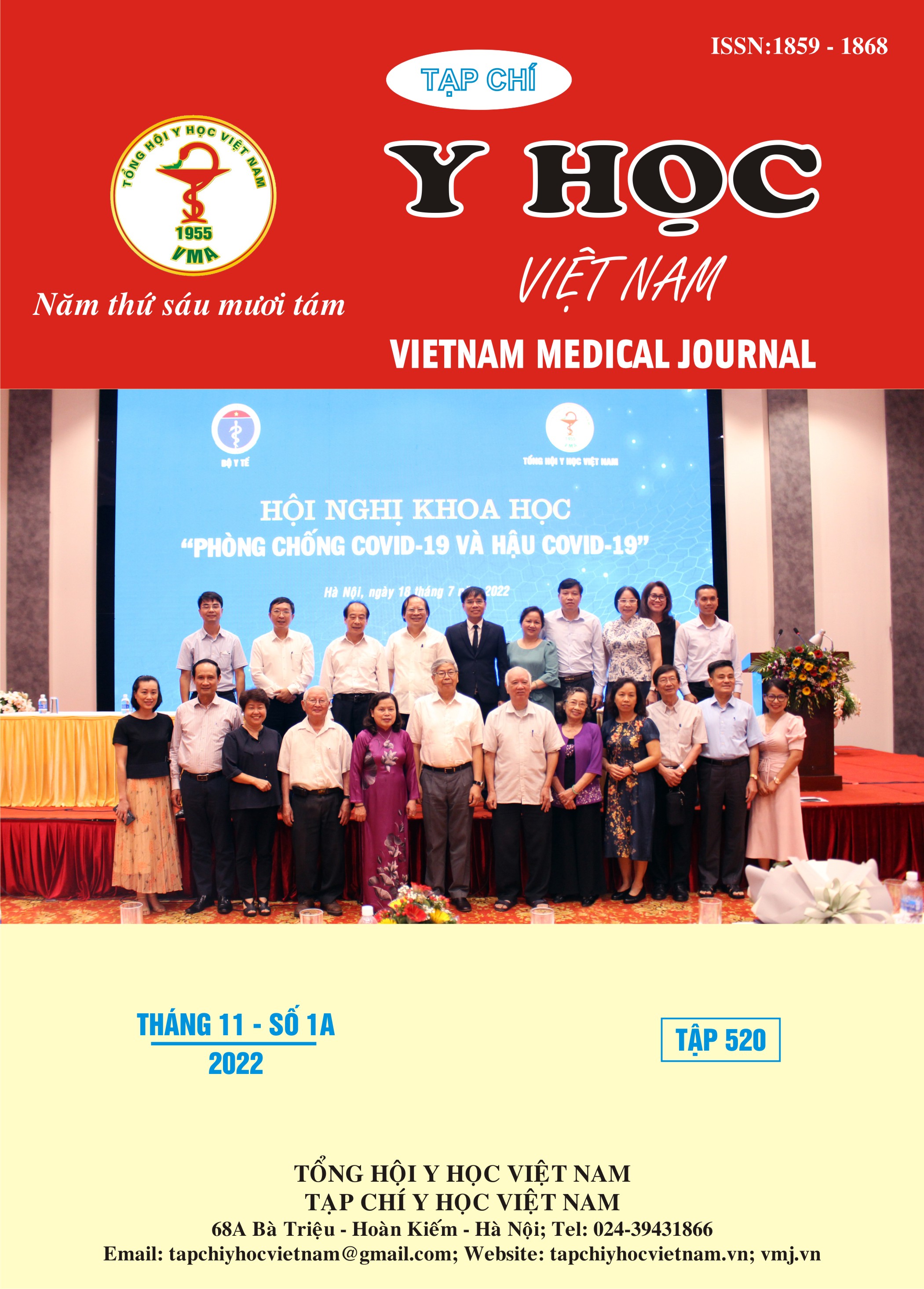STUDY ON MAGNETIC RESONANCE IMAGING CHARACTERISTICS OF FEMALE URETHRAL IN SOME CASE OF STRESS URINARY INCONTINENCE
Main Article Content
Abstract
Purpose: MRI characteristics in some cases of women with stress urinary incontinence. Materials and methods Retrospective, descriptive, cross-sectional study of 43 patietns. Among them, 22 patients with SUI (disease group) and 21 patients without SUI (control group) underwent of Dynamic Pelvic Magnetic Resonance Imaging (DP-MRI) at Hanoi Medical University Hospital from August 2010 to September 2022. Results: 82 % of patients in the disease group was over 49 y.o, the birthrate was 3 ± 1,1, in which the number of patients giving birth three times was 46% and mostly in vaginal delivery (86%). The mean urethral volume of the disease group (5,6 ± 2,1) was smaller than that of the control group (7,1 ± 1,8). The posterior urethrovesical angle increased statistically significant difference in the disease group during both resting and pushing (mean value was 1450 ± 130 and 1570 ± 150, respectively) compared to the control group (p<0,01, 95% CI). In the group of patients, the number of patients with bladder neck prolapse (72.73%) was more than the control group (57,14%) during straining, In the straining, there is an increase the mobility of the bladder neck with an average value of 21 ± 15, Conclusion Dynamic Pelvic Magnetic Resonance Imaging (DP-MRI) is a non invasive technique with excellent soft tissu resolution, providing the complete and accurate anatomical images to dignosis of Stress Urinary Incontinence (SUI)
Article Details
Keywords
Stress Urinary Incontinence (SUI)
References
2. Minassian VA, Drutz HP, Al-Badr A. Urinary incontinence as a worldwide problem. International Journal of Gynecology & Obstetrics. 2003;82(3):327-338.
3. Yu HJ. Quality of Life Research. 2003;12(3):327-333.
4. Kirby M. Managing stress urinary incontinence - a primary care issue: Managing Stress Urinary Incontinence. International Journal of Clinical Practice. 2006;60(2):184-189.
5. Tarhan S, Gümüş B, Temeltaş G, Ovali GY, Serter S, Göktan C. The comparison of MRI findings with severity score of incontinence after pubovaginal sling surgery. Turkish Journal of Medical Sciences. Published online January 1, 2010.


